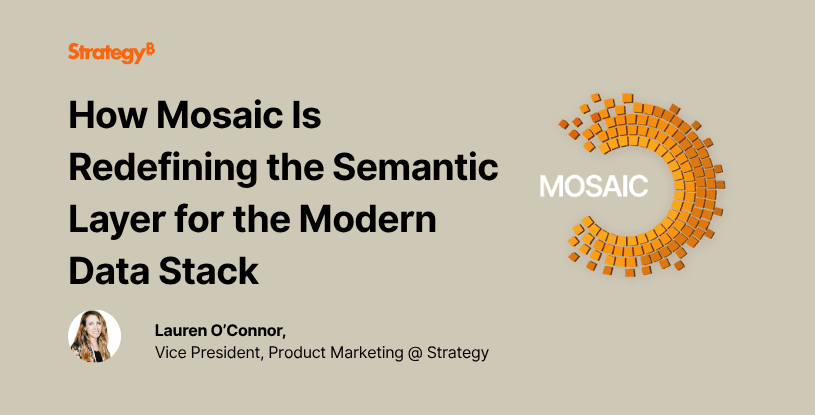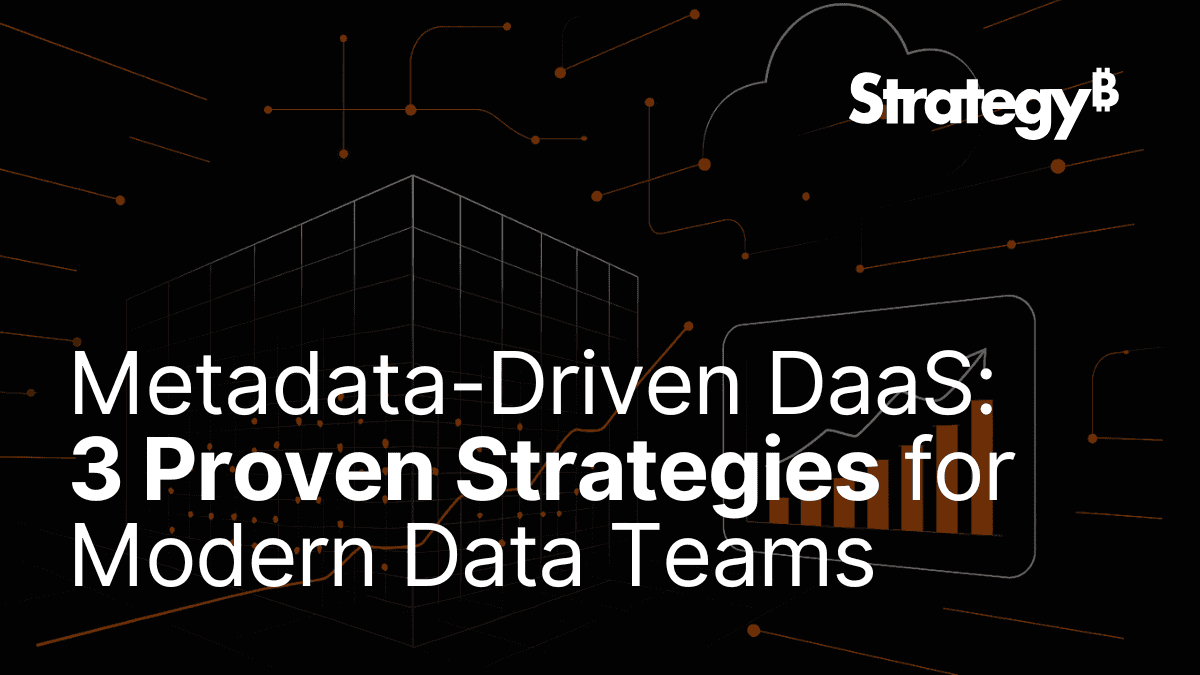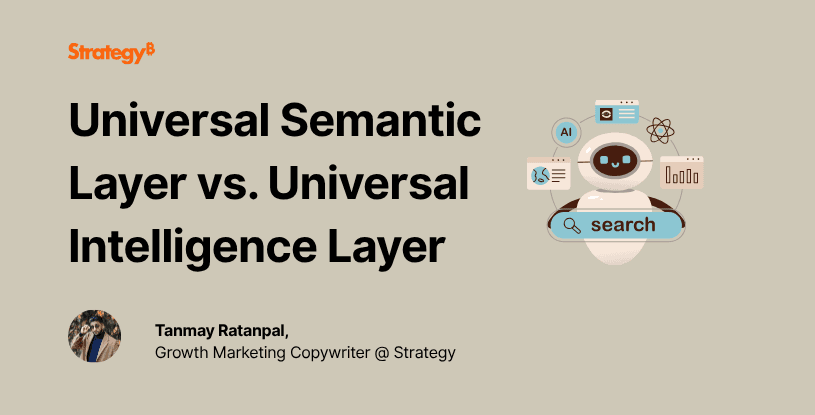Why Do Enterprises Need a Universal Semantic Layer?
According to International Data Corp (IDC), data creation will reach a total of 163 zettabytes by the end of 2025. That’s 163 followed by 21 zeros. With that much data, you could stream Netflix in 4K continuously—for over 1.5 billion years.
Lots of Data. Very Few Insights.
Enterprises gather data from countless internal sources—operational systems, CRM platforms, internal databases—and external inputs like social media, public feeds, and market research. They analyze this information to fuel decisions, discover opportunities, and stay competitive.
But there’s a problem.
A study by Splunk revealed that 60% of firms report that half or more of their data is “dark” —unseen, unused, and unanalyzed. Worse yet, one-third of organizations say over 75% of their data is dark.
The result? Data gets siloed, dashboards conflict, and different teams follow different definitions for even the most basic KPIs.
That’s why modern enterprises are investing in a universal semantic layer—a single layer that connects governed data to business logic, and gives every user access to consistent, real-time answers.
What does a Semantic Layer Do?
A universal semantic layer standardizes how data is defined, described, and accessed across an enterprise.
It acts as a shared foundation where your KPIs, business logic, and governance policies live—so they can be applied consistently across different tools, platforms, and user types.
With a semantic layer, every report, dashboard, or AI model connects to the same governed definitions—giving teams the ability to speak the same language, move faster, and make decisions with confidence.
What Are the Benefits of a Semantic Layer?
A universal semantic layer provides consistency. It delivers continuous, streamlined access to data, and offers enterprises an easier way to collect insights.
Furthermore, a universal semantic layer offers:
- Consistent KPIs and metrics: It eliminates confusion caused by siloed definitions across teams or tools. Less misalignment—more consistency.
- Faster insights: Business users no longer need to rely on analysts to interpret datasets—they can use personalized filters to access real-time insights relevant to their departments.
- Governed access: It securely controls how data is used and viewed—by role, region, or function. Users can also schedule timely compliance reports and stay on top of industry regulations.
- Better collaboration: From sales to supply chain, a universal semantic layer ensures each department makes decisions based on a shared understanding of the data.
- Lower data fatigue: Fewer dashboards, fewer debates, and more aligned decisions. A universal semantic layer becomes a single source of truth—for every metric within a report.
- Foundation for Enterprise AI: AI models are only as good as the data they’re trained on—semantic layers help deliver trustworthy inputs for AI to use and enhance enterprise analytics.
5 Reasons Enterprises Use a Semantic Layer
In enterprises, a semantic layer goes beyond benefits—it transforms processes, delivering the highest quality of data insights.
1. Improved Data Clarity Across Tools
Enterprise clients avoid confusion caused by competing dashboards or mismatched logic across Power BI, Tableau, Looker, and other tools. Using a universal semantic layer, they centralize the management of data without the need to set up individual, time-consuming integrations for each application.
2. Better Scalability. Stronger Governance.
Data consistency is a challenge when teams work across multiple regions. A universal semantic layer easily deploys across teams, roles, and regions—it standardizes data governance, ensures collaboration, and adheres to local regulatory standards.
3. Accelerated Decision-Making
Enterprise teams leverage the semantic layer to create interactive dashboards and instantly view KPIs. They can track performance, highlight trends, and act with confidence—with real-time, standardized data at their fingertips.
4. Stronger AI and Predictive Models
Semantic layers feed consistent, clean data into machine learning systems. This results in faster data analysis and deeper insights. From forecasting sales to optimizing supply chains, teams can anticipate market trends and refine future strategies—all from one governed layer.
5. Improved Operational Efficiency
With a universal semantic layer, each department spends less time validating numbers. It frees up more time to analyze operations, eliminate blind spots, and optimize delivery. Instead of internal data requests, users can access self-service data—anytime, even on mobile or tablet devices.
As BI continues to transform in the age of AI, enterprises need consistent, reliable data more than ever. Thus, a modern semantic layer doesn’t just need to deliver accuracy—it must deliver intelligence. That’s where Mosaic comes in.
Introducing Mosaic: The Next Generation of a Semantic Layer
Mosaic is an advanced evolution of the semantic layer for the AI era—built to meet the demands of today’s enterprise.
It combines governed data access, natural-language interaction, and AI-powered modeling into one Universal Intelligence Layer.
Mosaic unlocks hidden data insights, allowing users to:
- Connect each data silo
- Control every business definition
- Consume trusted data in any application
Mosaic’s optimized connectors enable users to leverage its universal intelligence layer and enhance analytics within Tableau, Power BI, Excel, and Sheets. Moreover, it connects with 200+ data sources, ensuring that every piece of data is captured and analyzed.
Whether you're in finance, marketing, ops, or IT—Mosaic delivers enterprise-grade data insights without the cost or complexity of traditional data warehouses and integrations.



.png&w=3840&q=60)


